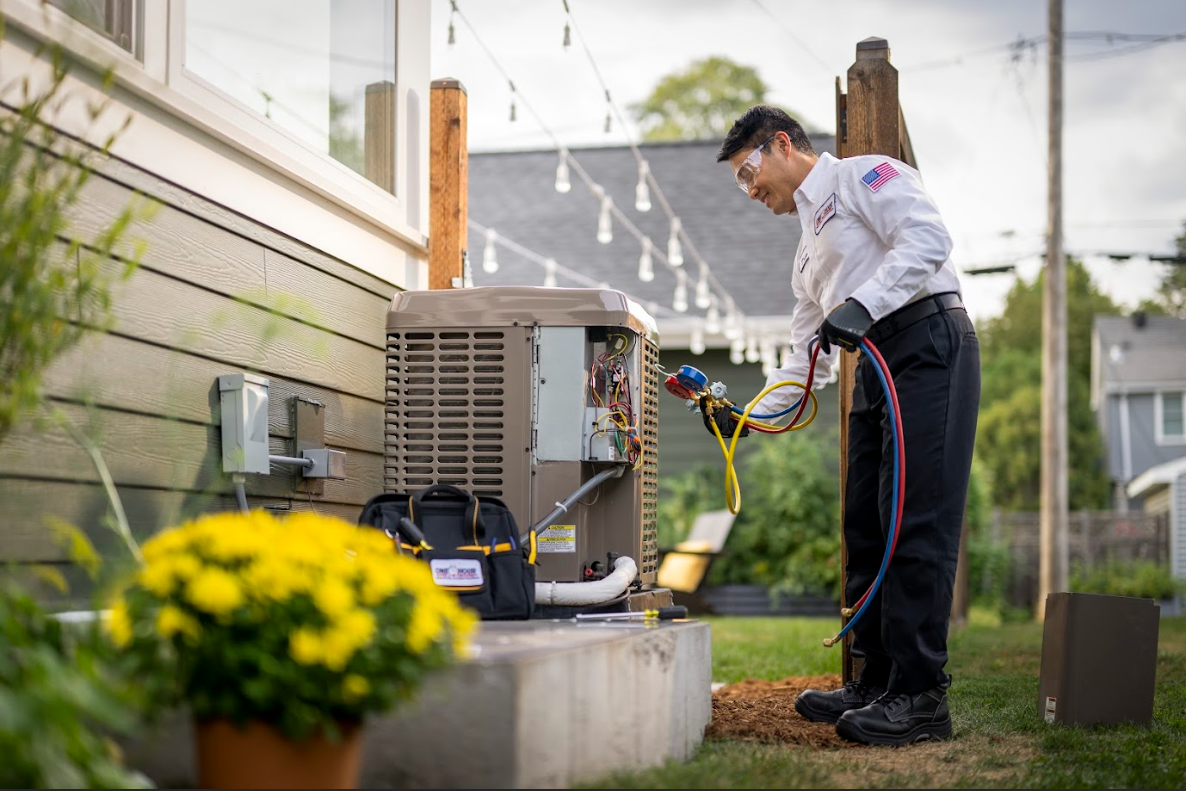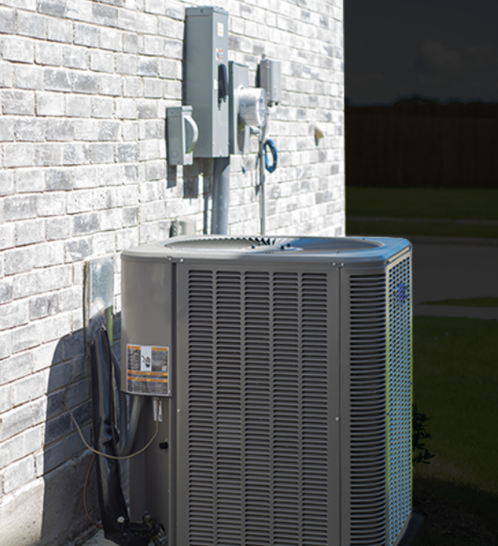
Common heating mistakes homeowners make
Ogden winters test every furnace. The cold sets in fast along Harrison Boulevard and up into North Ogden benches. A small oversight in fall can turn into a no-heat call on a January night. This walkthrough highlights the missteps local homeowners make most often, how to spot them early, and when it is wiser to schedule professional furnace repair Ogden than keep tinkering. The goal is simple: safer heat, steadier comfort, lower bills, and fewer breakdowns.
Waiting until it fails
Many residents wait for a loud bang or a blank thermostat before calling for service. By then, the damage is usually more expensive. Early symptoms come first. Short heat cycles, a faint electrical smell at startup, hot and cold rooms, a new rattle, or a gas bill that jumps 10 to 20 percent compared to the same month last year all point to trouble brewing. In Weber County’s dry cold, parts shrink and expand more, so small issues grow fast. A quick visit in October or November costs less than an emergency visit on a Sunday in January.
A local example helps. A client in Washington Terrace ignored a two-minute on, two-minute off cycle. The cause was a dirty flame sensor and a weak inducer motor. Total repair was minor because they called before the motor failed. If they had waited another week, the heat exchanger would have overheated and tripped safety locks, turning a small fix into a big one.
Skipping air filter changes
Clogged filters cause most airflow and overheating complaints. Restricted airflow drives up heat exchanger temperatures and forces limits to trip. That creates short cycling, soot, and cracked heat exchangers over time. In Ogden’s dustier late summer and fall, a 1-inch filter can load up in 30 to 45 days, not 90.
Match the filter to the home and furnace:
- Use a basic MERV 8 for most gas furnaces. It protects the blower and coil without choking airflow.
- Reserve MERV 11 to 13 for homes with allergies and only if the ductwork and blower can handle it.
- Check 1-inch filters monthly. Check 4- to 5-inch media every 2 to 3 months.
If a furnace shuts down after 5 to 10 minutes, feels hot to the touch, and then restarts after cooling, a dirty filter or blocked return is the first suspect. Replacing the filter is quick and often ends short cycling on the spot.
Closing too many supply vents
It seems logical to close vents in unused rooms to save heat. In practice, closing several supply vents raises static pressure, makes the blower work harder, and pushes heated air through leaks in ducts rather than to the rooms that need it. High static also leads to louder operation and premature motor wear.
A better tactic in Ogden’s mixed housing stock is balance. Keep at least 80 percent of registers open. If a basement room runs cool, partly open that vent and verify returns are not blocked by furniture or rugs. For stubborn hot-cold splits, a quick airflow check and damper adjustment by a technician will often solve it without parts.
Ignoring strange sounds and smells
Sound and smell tell a clear story. A metallic screech suggests a dry or failing blower bearing. Low rumbles at shutdown point to delayed ignition or dirty burners. A sulfur smell means a gas leak that calls for immediate attention. A musty odor during the first heating cycle likely comes from dust burning off, but if it lingers beyond a day, the system needs cleaning.
Homeowners in Ogden sometimes normalize these changes because the furnace still heats. That is risky. Delayed ignition can crack burners or damage the heat exchanger. A screeching motor may run for weeks before seizing on the coldest night. Call early for furnace repair Ogden UT and mention the exact sound and when it happens. That detail speeds diagnosis.
Relying on space heaters to “help” the furnace
Portable heaters feel handy during a cold snap, but they hide problems rather than fix them. They also drive up power bills, overload circuits, and create fire risk near bedding or curtains. If bedrooms on the east side of a house need space heaters, the furnace is either undersized, the ducts are leaking, or the airflow is unbalanced. Correcting duct leaks and balancing often lowers gas use 5 to 15 percent and removes the need for plug-in heaters entirely.
Thermostat mistakes that cost comfort
Thermostats do more than on and off. A few common errors reduce comfort and strain the system:
- Setting large swings. Dropping 8 to 10 degrees during the day sounds efficient, but recovery on a 15-degree morning can run the furnace flat out for an hour. A steady 3 to 5 degree setback works better in Ogden’s climate.
- Wrong fan mode. “On” runs the blower nonstop and can make rooms feel cool as it circulates unheated air between cycles. “Auto” is right for most homes unless a tech recommends continuous fan for filtration or balancing.
- Dead batteries. Many heat calls end with two AA batteries. Replace them at daylight saving time changes to avoid surprise outages.
- Poor location. A thermostat near a drafty door, window, or a sunny wall misreads room temperature. It short cycles and wastes gas. Relocation is a quick fix that pays back in comfort.
Skipping annual maintenance
A gas furnace benefits from a once-a-year visit. Not for a sticker, but for specific work that matters on the Wasatch Front: burner cleaning, flame sensor polishing, combustion analysis, temperature rise measurement, static pressure reading, and safety checks for the pressure switch, rollout, and high-limit. A full tune-up catches cracks, soot patterns, and weak igniters before they cause a no-heat call. In practice, well-maintained systems last 2 to 5 years longer and use 5 to 12 percent less gas.
Schedule maintenance in early fall to beat the rush. Technicians have more time, parts are in stock, and small corrections can be made before you need heat 24/7.
Blocking returns and starving airflow
Homes near downtown Ogden often have a single large return in the hall. A bookcase or bench can sit in front of it without anyone noticing. That cuts airflow, increases heat exchanger temperature, and leads to nuisance shutdowns. Upstairs, bedrooms with closed doors and no dedicated returns develop pressure imbalances and grow cold.
Leave 12 inches of clear space in front of returns. Use door undercuts or https://www.onehourheatandair.com/ogden jump ducts to help air find its way back. If rooms still struggle, ask for a static pressure test during a service visit. Simple changes like adding a return or resizing a grille can make a big difference.
Misunderstanding humidity and IAQ in winter
Cold outside air holds less moisture. By January, indoor relative humidity can drop to 20 to 25 percent. Dry air feels cooler, so people bump thermostats up, which wastes fuel. Dry air also shrinks wood floors and trim, causing gaps and creaks. A whole-home humidifier set to 30 to 35 percent often lets the thermostat sit 1 to 2 degrees lower while feeling the same. That saves gas and reduces static shocks.
Furnaces do not add fresh air by themselves. If the home feels stuffy or headaches are common, ask about ventilation options with heat recovery. Better air can mean lower thermostat settings and steadier comfort.
DIY beyond a safe limit
Homeowners can replace filters, swap thermostat batteries, vacuum floor registers, and gently wipe visible dust from the furnace cabinet. Beyond that, the risks rise. Ignition systems, gas valves, and heat exchangers need qualified hands and combustion testing. Using the wrong part, applying sealant where it should not go, or brushing a fragile flame sensor can lead to repeated shutdowns or unsafe operation.
A common misstep is cleaning a flame sensor with sandpaper. It seems helpful, but it removes the thin protective coating and shortens sensor life. A soft Scotch-Brite pad or a dollar bill is safer. If the sensor fouls more than once a season, the root cause may be improper combustion or venting, which calls for a pro.
Overlooking venting and fresh air
Snowdrifts in Ogden can block sidewall intake and exhaust pipes on high-efficiency furnaces. A blocked pipe causes pressure switch faults and shutdowns. Birds and wasps can also nest in terminations during warmer months. Check that terminations are clear after storms and after long warm spells. For roof-vented older furnaces, rust streaks or white staining near the base of the flue point to condensation and poor draft.
If the furnace room has grown tighter after window or insulation upgrades, it may lack combustion air. Signs include sooting, a wavering yellow flame, and a burning smell. Adding combustion air or correcting vent size solves it and protects the home.

Not comparing repair vs. replacement at the right time
There is a point where ongoing repair costs exceed the value of a new unit. As a rule, if a furnace is 15 to 20 years old, out of warranty, and needs a major part such as a heat exchanger or control board, price both paths. Factor in recent repair totals, current gas bills, and comfort complaints. Many Ogden homes see a payback within a few winters due to better efficiency and fewer service calls.
That said, replacing a 10-year-old furnace over a $200 igniter is seldom wise. A local technician can run a load calculation, check duct sizing, and give a clear estimate for both repair and replacement so you can choose with full context.
A quick homeowner checklist
Use this short list before calling for furnace repair Ogden. It often trims diagnosis time and can solve simple issues:
- Confirm the thermostat is on Heat, set above room temp, and has fresh batteries.
- Check the filter and replace if dirty or older than 60 days.
- Make sure supply registers and returns are open and unblocked.
- Look outside for snow, leaves, or nests blocking PVC intake or exhaust.
- Note any error lights blinking on the furnace and count the flashes.
If the furnace still struggles, stop there. Repeated resets or power cycling can mask codes and delay proper diagnosis.
Why Ogden homes benefit from a local pro
Local conditions matter. High desert air, lake-effect snow, older homes near 25th Street, newer tight houses in North Ogden and Pleasant View, and elevation swings toward the benches all change how a furnace breathes and vents. A technician who works daily in Weber County knows the common venting runs, typical static pressures in tract ducts, and which models have recurring issues in this climate. That saves time and protects the equipment.
If the system shows any of the signs above, schedule furnace repair Ogden UT with One Hour Heating & Air Conditioning. Describe the symptoms, the age of the furnace, and any recent work. A focused visit can restore heat, reduce fuel use, and set your home up for a smoother winter.

One Hour Heating & Air Conditioning provides trusted furnace repair in Ogden, UT and full-service HVAC solutions for homes and businesses. Family-owned and operated by Matt and Sarah McFarland, our company is built on honesty, hard work, and quality service—values passed down from Matt’s experience on McFarland Family Farms, known across Utah for its sweet corn. As part of a national network founded in 2002, we bring reliable heating and cooling care backed by professional training and local dedication.
Our licensed technicians handle furnace and AC installation, repair, and maintenance, heat pumps, ductless mini-splits, thermostat upgrades, air purification, indoor air quality testing, humidifiers, dehumidifiers, duct cleaning, zoning systems, and energy-efficient replacements. We stand by a 100% satisfaction guarantee through the UWIN® program and provide honest recommendations to help Ogden homeowners stay comfortable year-round.
Call today for dependable service that combines national standards with a personal, local touch.
One Hour Heating & Air Conditioning
1501 W 2650 S #103 Phone: (801) 405-9435 Website: https://www.onehourheatandair.com/ogden
Ogden,
UT
84401,
USA